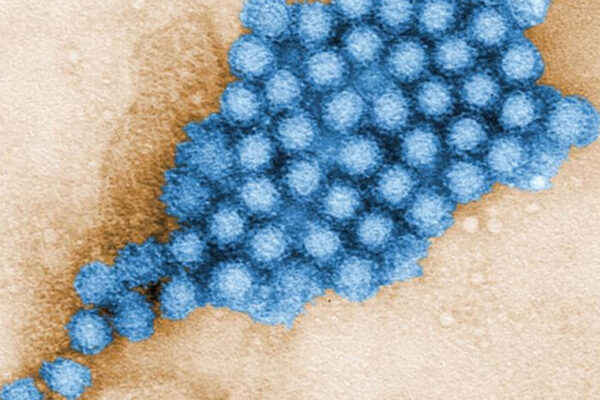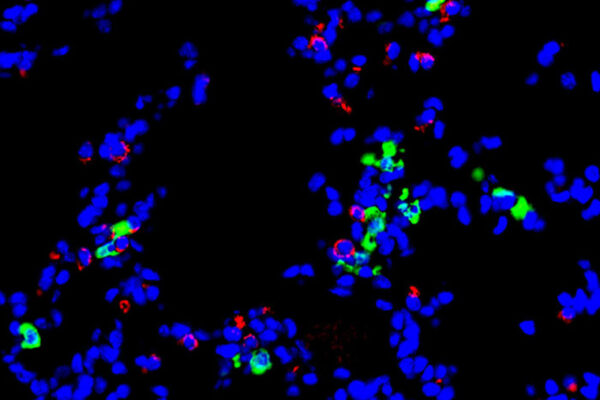In the spring, the U.S. government and the World Health Organization declared an end to the COVID-19 global health emergency. But for millions of people who have been infected with SARS-CoV-2, the pandemic’s legacy of pain, suffering and daily disruption persists as a debilitating condition known as long COVID.
A new study from Washington University School of Medicine in St. Louis and the Veterans Affairs St. Louis Health Care system shows that even two years after infection with the virus, fallout from COVID-19 may persist. The researchers found that people who had COVID — including those who were hospitalized within the first 30 days following infection and those who were not — were still, up to two years after infection, at an elevated risk for many long COVID-related conditions including diabetes, lung problems, fatigue, blood clots and disorders affecting the gastrointestinal and musculoskeletal systems.
“For far too many people, the continuing and enduring risk of long COVID and its long-term, adverse effects on health are sober reminders that the pandemic is not in the rearview mirror,” said senior author Ziyad Al-Aly, MD, a clinical epidemiologist at Washington University. “The continuous struggles of people with long COVID are vivid, daily reminders of the detrimental and long-lasting legacy of COVID-19.”
On an encouraging note, however, the researchers noted that during the two-year study period, some COVID-related health risks among the nonhospitalized — the majority of people infected with the virus — declined and became insignificant. Such risks included death, hospitalization and disorders associated with the brain, heart, kidneys and mental health. For example, risks of death and hospitalization became insignificant at six and 19 months, respectively.
But those hospitalized within 30 days of being infected with the virus fared worse. Two years after infection, their risk of death and hospitalization remained elevated, and their risk of adverse health conditions remained significant across all organ systems.
The study is published Aug. 21 in Nature Medicine.
“Our findings highlight the substantial cumulative burden of health loss due to long COVID and emphasize the ongoing need for health care for those faced with long COVID,” said Al-Aly, who treats patients within the VA St. Louis Health Care System. “It appears that the effects of long COVID for many will not only impact such patients and their quality of life, but potentially will contribute to a decline in life expectancy and also may impact labor participation, economic productivity, and societal well-being.”
Past research by Al-Aly and scientists worldwide has detailed COVID-19’s assault on nearly every human organ, contributing to diseases and conditions affecting the lungs, heart, brain, and the body’s blood, musculoskeletal and gastrointestinal systems. The new study focused on the risk of death, hospitalization and 80 different adverse health conditions possible in people with COVID-19 during the two years post-infection.
“Most of what we know about long COVID is limited to research analyzing data of patients six months to a year after initial infection,” Al-Aly said. “Looking beyond the first year after infection and understanding of the longer term health trajectories of people who had COVID-19 is very important and may help inform care strategies for this population.”
The researchers analyzed about 6 million de-identified medical records in a database maintained by the U.S. Department of Veterans Affairs, the nation’s largest integrated health-care system. Patients represented multiple ages, races and sexes.
The researchers created a controlled data set of more than 5.9 million people who did not test positive for COVID-19 infection from March 1, 2020, through Dec. 31, 2020. Using the same time frame, the researchers also compiled a group of 138,818 people who had tested positive for COVID-19. Of the latter, 118,238 represented the nonhospitalized patients, and the hospitalized group numbered 20,580.
Statistical modeling was used to examine the health risks associated with the virus two years after infection. Within that time frame, data was collected from those who had COVID-19 and from the noninfected control group at five different periods to determine if and when the risks for 80 long COVID-related conditions had started to decline and equalize with the noninfected control group.
Compared with the control group, the postinfection risks of death and hospitalization among those not hospitalized diminished and became on par with the noninfected control group at six months and 19 months, respectively. Over the two-year span, the risks decreased and became insignificant for 55 (69%) of the 80 long COVID-related conditions studied by researchers.
Among those hospitalized for COVID-19, the risk of death and hospitalization remained elevated two years postinfection as did the risk for 52 (65%) of the 80 long COVID-related conditions. “This suggests a difficult and protracted road to recovery among those whose disease was sufficiently severe enough to necessitate hospitalization while infected with the virus,” Al-Aly said.
Additionally, researchers measured and compared the number of healthy life-years lost due to COVID-19. They found that among those nonhospitalized, at two years after infection COVID-19 had contributed to 80 lost years of healthy life per 1,000 persons. About 25% of this loss occurred during the second year.
“This 25% is a substantial proportion of an exorbitantly high burden of disability and disease,” Al-Aly said. “This illustrates the long and arduous journey of dealing with the long-term health consequences of the virus. COVID-19 still generates substantial additional risks of health loss even in the second year after infection.”
The researchers found that the number of healthy-life years lost to COVID-19 was significantly higher than with other major diseases in the U.S. For example, over a lifetime, cancer and heart disease claimed, respectively, 50 and 52 healthy-life years lost per 1,000 people compared to COVID’s 80 in the first two years after infection.
“It is possible the burden of disability and disease due to long COVID may increase as we continue to study the virus’s long-term health effects,” Al-Aly said. “These figures at two years already show a staggeringly high burden. What’s more, unlike cancer and heart disease, there is no treatment yet for long COVID.”
Steps to decrease the risk of long COVID should be a major focus of public health policy, Al-Aly said. “Reducing the risk of infection and transmission with updated vaccines — including vaccines that block transmission — may be a critical strategy to reduce the risk of long-term health problems,” he said. “We also need an urgent, coordinated approach that matches the scale and gravity of long COVID to find treatments as soon as possible.”
Bowe B, Xie Y, Al-Aly Z. Post-acute sequelae of COVID-19 at 2 years. Nature Medicine. Aug. 21, 2023. DOI: 10.1038/s41591-023-02521-2
This research was funded by the U.S. Department of Veterans Affairs.
About Washington University School of Medicine
WashU Medicine is a global leader in academic medicine, including biomedical research, patient care and educational programs with 2,800 faculty. Its National Institutes of Health (NIH) research funding portfolio is the third largest among U.S. medical schools, has grown 52% in the last six years, and, together with institutional investment, WashU Medicine commits well over $1 billion annually to basic and clinical research innovation and training. Its faculty practice is consistently within the top five in the country, with more than 1,800 faculty physicians practicing at 65 locations and who are also the medical staffs of Barnes-Jewish and St. Louis Children’s hospitals of BJC HealthCare. WashU Medicine has a storied history in MD/PhD training, recently dedicated $100 million to scholarships and curriculum renewal for its medical students, and is home to top-notch training programs in every medical subspecialty as well as physical therapy, occupational therapy, and audiology and communications sciences.



